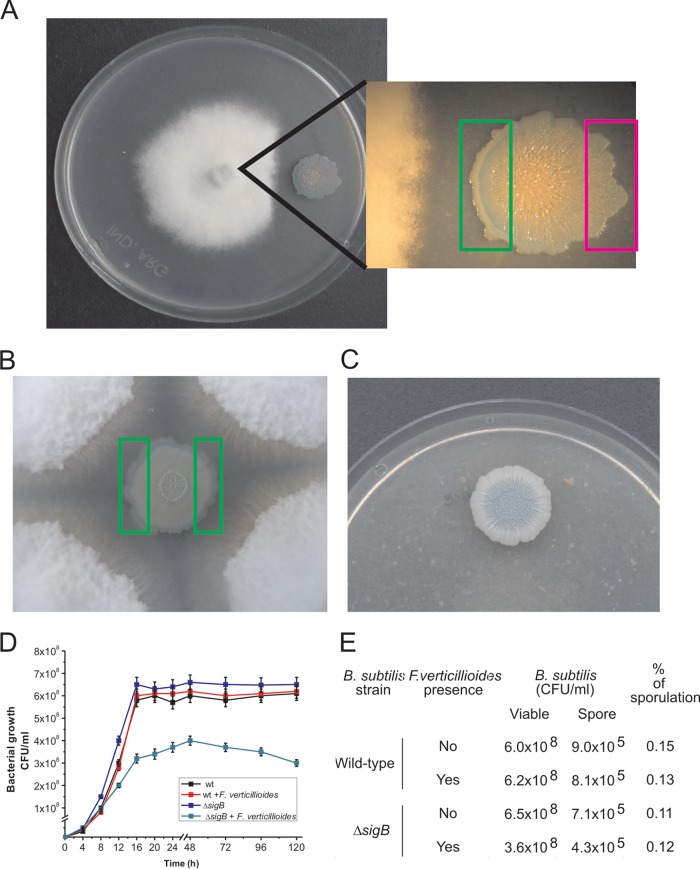FIG 1.
Antagonistic response of B. subtilis confronted with F. verticillioides. (A and B) The coculture of a B. subtilis NCIB3610 isogenic strain harboring a ctc-lacZ fusion as a reporter of SigB activity (strain DG555) (Table 1) with F. verticillioides allowed observation of the antagonistic fungus-bacterium interaction. The pattern of induction of SigB is evidenced by the development of blue color (derived from expression of the ctc-lacZ fusion) inside the bacterial colony. The areas represented by the rectangles correspond to the colony areas that were used to quantify the level of SigB-directed β-galactosidase activity (see the text for details). (C) Pattern of SigB expression when the DG555 strain was developed in the absence of F. verticillioides. For panels A to C, cells were grown on PDA plates supplemented with X-Gal (60 µg/ml) for 96 h at 28°C. (D and E) Planktonic growth and sporulation proficiency of the wild-type (wt) strain NCIB3610 and its isogenic SigB-deficient derivative (ΔsigB; strain DG559) (Table 1) in the absence and presence of live F. verticillioides (see Materials and Methods for details). Typical results from five independent experiments performed in duplicate are shown for panels A to E.

